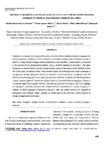Use este identificador para citar ou linkar para este item:
http://www.alice.cnptia.embrapa.br/alice/handle/doc/932947Registro completo de metadados
| Campo DC | Valor | Idioma |
|---|---|---|
| dc.contributor.author | DELAMUTA, J. R. M. | pt_BR |
| dc.contributor.author | RIBEIRO, R. A. | pt_BR |
| dc.contributor.author | MENNA, P. | pt_BR |
| dc.contributor.author | BANGEL, E. V. | pt_BR |
| dc.contributor.author | HUNGRIA, M. | pt_BR |
| dc.date.accessioned | 2012-09-04T11:11:11Z | pt_BR |
| dc.date.available | 2012-09-04T11:11:11Z | pt_BR |
| dc.date.created | 2012-09-04 | pt_BR |
| dc.date.issued | 2012 | pt_BR |
| dc.identifier.citation | Brazilian Journal of Microbiology, São Paulo, v. 43, n.2, p. 698-710, Apr./June 2012. | pt_BR |
| dc.identifier.uri | http://www.alice.cnptia.embrapa.br/alice/handle/doc/932947 | pt_BR |
| dc.description | Symbiotic association of several genera of bacteria collectively called as rhizobia and plants belonging to the family Leguminosae (=Fabaceae) results in the process of biological nitrogen fixation, playing a key role in global N cycling, and also bringing relevant contributions to the agriculture. Bradyrhizobium is considered as the ancestral of all nitrogen-fixing rhizobial species, probably originated in the tropics. The genus encompasses a variety of diverse bacteria, but the diversity captured in the analysis of the 16S rRNA is often low. In this study, we analyzed twelve Bradyrhizobium strains selected from previous studies performed by our group for showing high genetic diversity in relation to the described species. In addition to the 16S rRNA, five housekeeping genes (recA, atpD, glnII, gyrB and rpoB) were analyzed in the MLSA (multilocus sequence analysis) approach. Analysis of each gene and of the concatenated housekeeping genes captured a considerably higher level of genetic diversity, with indication of putative new species. The results highlight the high genetic variability associated with Bradyrhizobium microsymbionts of a variety of legumes. In addition, the MLSA approach has proved to represent a rapid and reliable method to be employed in phylogenetic and taxonomic studies, speeding the identification of the still poorly known diversity of nitrogen-fixing rhizobia in the tropics. | pt_BR |
| dc.language.iso | eng | eng |
| dc.rights | openAccess | eng |
| dc.subject | Fixação biológica de nitrogênio | pt_BR |
| dc.title | Multilocus sequence analysis (MLSA) of Bradyrhizobium strains: revealing high diversity of tropical diazotrophic symbiotic bacteria. | pt_BR |
| dc.type | Artigo de periódico | pt_BR |
| dc.date.updated | 2017-08-05T11:11:11Z | pt_BR |
| riaa.ainfo.id | 932947 | pt_BR |
| riaa.ainfo.lastupdate | 2017-08-05 | pt_BR |
| dc.identifier.doi | 10.1590/S1517-83822012000200035 | pt_BR |
| dc.contributor.institution | JAKELINE RENATA MARÇON DELAMUTA, UEL; RENAN AUGUSTO RIBEIRO, CNPSO; PÂMELA MENNA, CNPq; ELIANE VILLAMIL BANGEL, Fundação Estadual de Pesquisa Agropecuária, RS; MARIANGELA HUNGRIA DA CUNHA, CNPSO. | pt_BR |
| Aparece nas coleções: | Artigo em periódico indexado (CNPSO)  | |
Arquivos associados a este item:
| Arquivo | Descrição | Tamanho | Formato | |
|---|---|---|---|---|
| multilocus.braz.j.microb.2012.pdf | 420,98 kB | Adobe PDF |  Visualizar/Abrir |









